"Belisario Corenzio (1558-1646) And Workshop - Saint Jacques Bullfighter At The Battle Of Clavijo"
Belisario CORENZIO and his workshop(Cyparisse, 1558 – Naples, 1646)
Saint Jacques bully at the battle of Clavijo
H. 120 cm; L. 98 cm
Around 1600
This fiery and colorful Mannerist painting is the work of an artist of the Neapolitan school, with a particularly violent and sulphurous existence, notably influenced by The Horseman of Arpin and Tintoretto. Born in Greece, Corenzio went to Naples around the age of 12, but it was in Venice where he seems to have received his real training, spending five years in Tintoretto's workshop. Within his considerable production, his first referenced works date from 1590; These are frescoes, which represent most of his corpus, adorning a large number of Neapolitan churches but also private palaces. Altarpieces, on the other hand, are relatively rare at Corenzio, as are oil paintings, which are clearly less profitable than large fresco works using more expeditious processes. This is because our artist was extremely greedy for profit. Initially supported by rich local merchants, but also thanks to his skill and his power of work, Corenzio quickly achieved a hegemonic position in the Neapolitan artistic environment, but, jealous, envious and sneaky, he could not stand the glory of others and regarded all other painters as enemies. He managed to come to an agreement with Giuseppe Ribera (the Spaniard being, like him, a Neapolitan by adoption), then first painter to the viceroy, and with Giovanni Battista Caracciolo (1578-1635) to form a sort of mafia triumvirate on the artistic community of Naples, exercising a merciless dictatorship, using all the baseness and threats towards the painters who could compete with them, in particular with those coming from outside. Among the best known who suffered from these persecutions (of which Corenzio was in fact the main organizer), there was first Annibal Carracci in 1609, then, around 1630, the Cavalier d'Arpin, Guido Reni, Le Dominiquin and Giovanni Lanfranco, all of whom left Naples in panic, Domenichino probably dying of poisoning. Corenzio died, according to several sources, by falling from a scaffolding. Our work is one of the few oil paintings by Corenzio to have survived. The art historian Luigi Lanzi wrote in the 18th century: “He painted very little in oil, although he had a lot of merit in terms of the union and strength of the colors. He was a good imitator of Tintoretto when he took the trouble to work diligently; but he more frequently had a manner consistent with that of the Chevalier d’Arpino…”. Endowed with an abundant and bold imagination, painting quickly and energetically, Corenzio is indeed close to Tintoretto, particularly in his ease in composing rather confusing scenes with numerous characters, with sophisticated and theatrical poses, characteristic of mannerism. But its borrowings from the stylistic repertoire of the Roman mannerist, Giuseppe Cesari, known as the Cavalier d'Arpin (1568-1640) are even more striking, particularly in our painting, with for example the representation of horses with strong necks, generous croup and bent position. anteriors (even if Corenzio has his own way of drawing the eyes and ears), and the presence in the air of Saint-Jacques on horseback, like a Perseus coming to deliver Andromeda. Our painting could well be a modello, or rather a small replica of the work which was in the 19th century in the Royal Bourbon Museum at the Studi Palace (current National Archaeological Museum of Naples), as described in 1843 in the guide from the gallery of paintings: “Saint James of Galicia on horseback exterminating the Saracens - Table of merit for the well-drawn and grouped composition, and for the lively and cheerful coloring”, an oil on wood measuring 12 x 8.5 feet (i.e. approximately 3.70 x 2.60 m). Charles Blanc gave it a slightly different title (Saint James of Galicia putting the Saracens to flight) and described it thus: “Mounted on a white horse, the saint pursues, sword in hand, the infidel riders; his coat floats behind his shoulders, his attitude is full of pride and enthusiasm. In the background of the painting, which is painted in greenish tones, we see a routed army. A description that corresponds well to our composition. Clavijo is a legendary battle which opposed, on May 23, 844, the troops of King Ramire I of Asturias to the Moorish army of Abd al-Rahman II. The battle took place some 35 kilometers east of the monastery of San Millán de la Cogolla. The previous night, Saint James the Greater appears to Ramire in a dream, encourages him to take up arms the next day and assures him of his protection. During this fight, mounted on a sparkling white steed, the apostle lends a hand to his protégés, whom he leads to victory, and frees from the tribute the hundred virgins that the emir collected each year since the reign from Mauregat of Asturias. The iconography of this appearance of the Apostle is frequent, but is rarely found created by Italian painters. Ambrosius Benson in a triptych on the subject of the battle shows us a Saint James on the ground, trampling the bodies with turbaned heads with his horse's hooves. This representation is the most classic, it crosses the centuries and is found practically in every artist, depicting the saint among mortals. Contrary to this, Corenzio develops in our painting another point of view, that of the pure apparition, coming from the sky, isolated from earthlings by its levitation on a cloud, ready to plunge on the Moors with its flaming sword. All these particularities seem to be real exceptions in the representation of this battle, where the divine is not so much an actor, but a psychological support. We thank Professor Nicola Spinosa for her insight into the attribution to Bélisario Corenzio and his workshop.


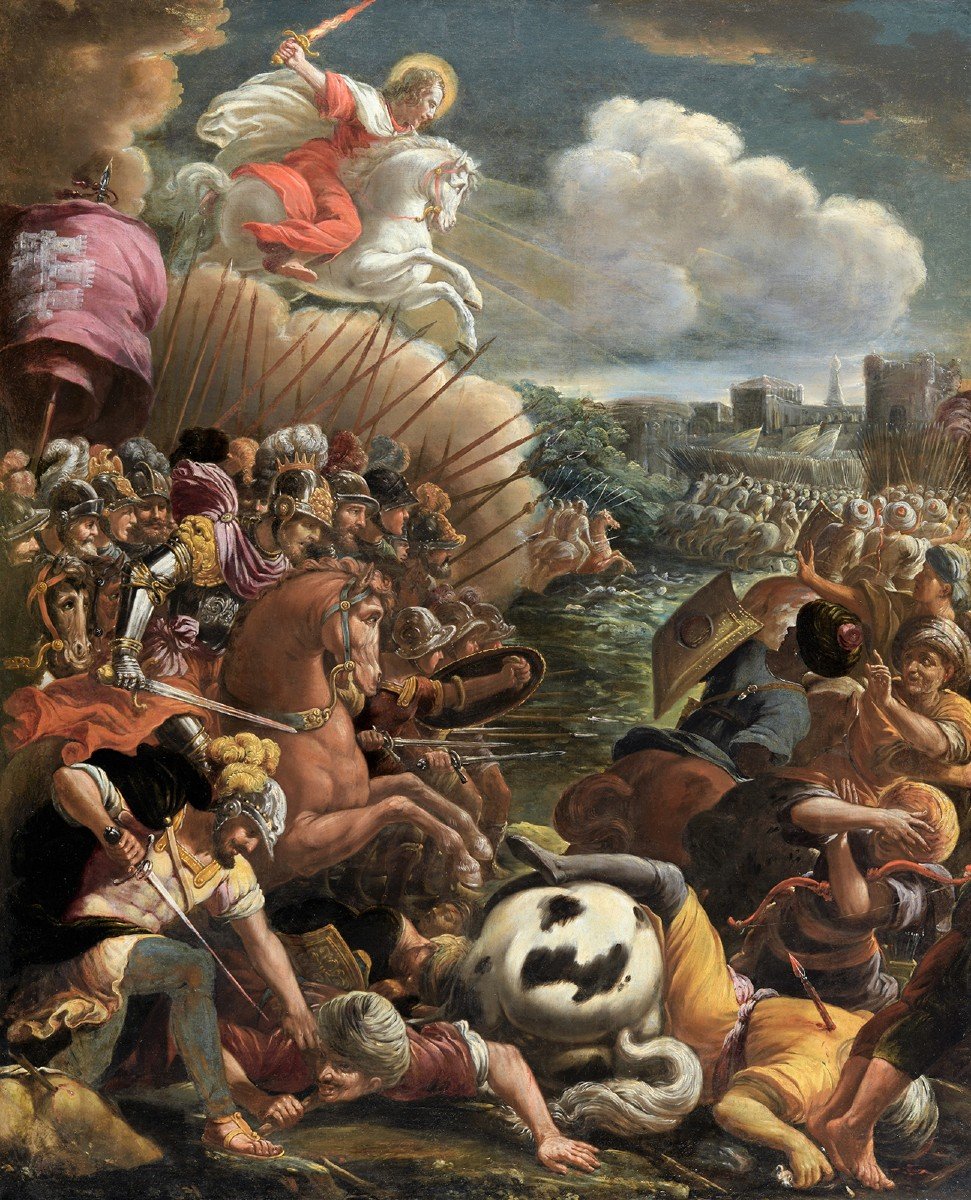
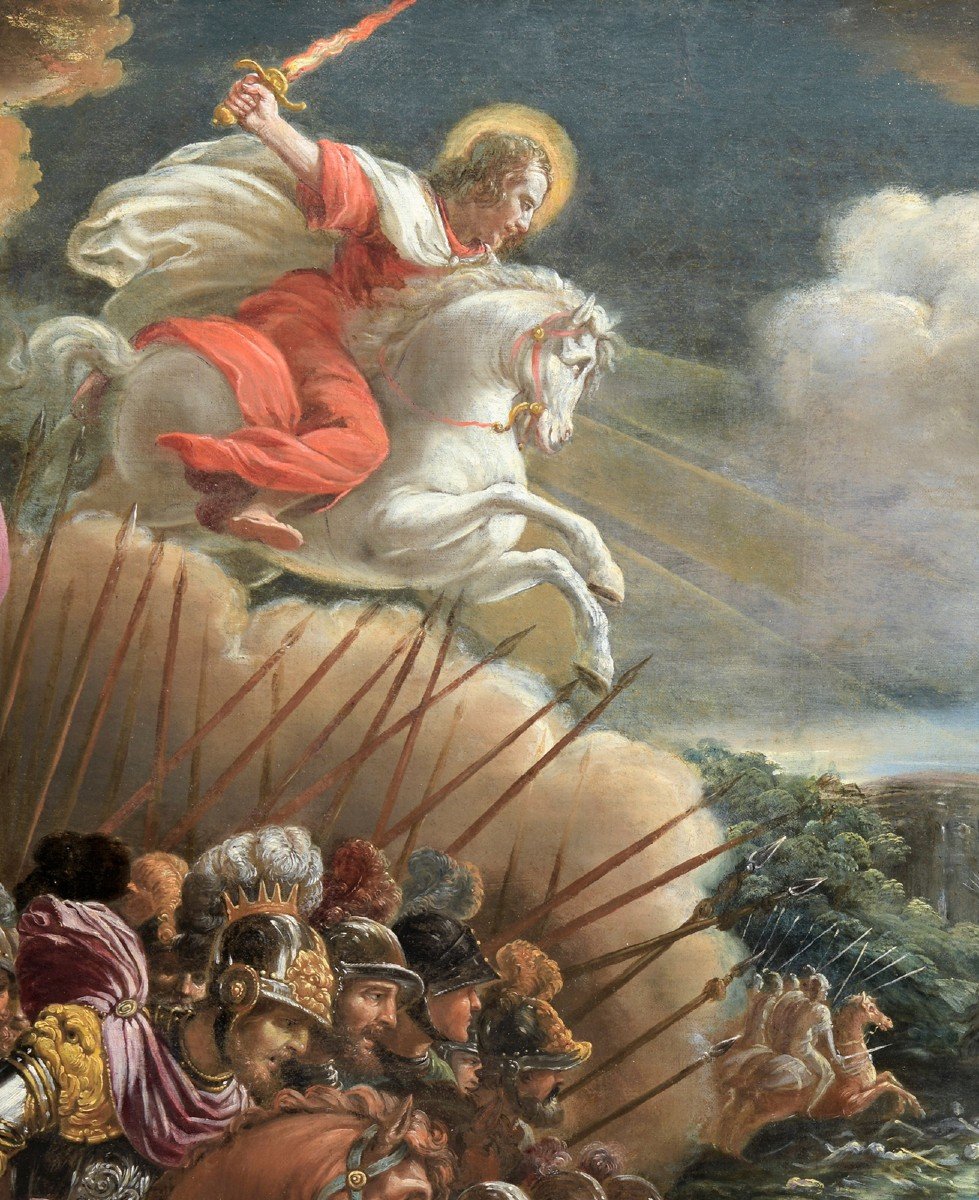
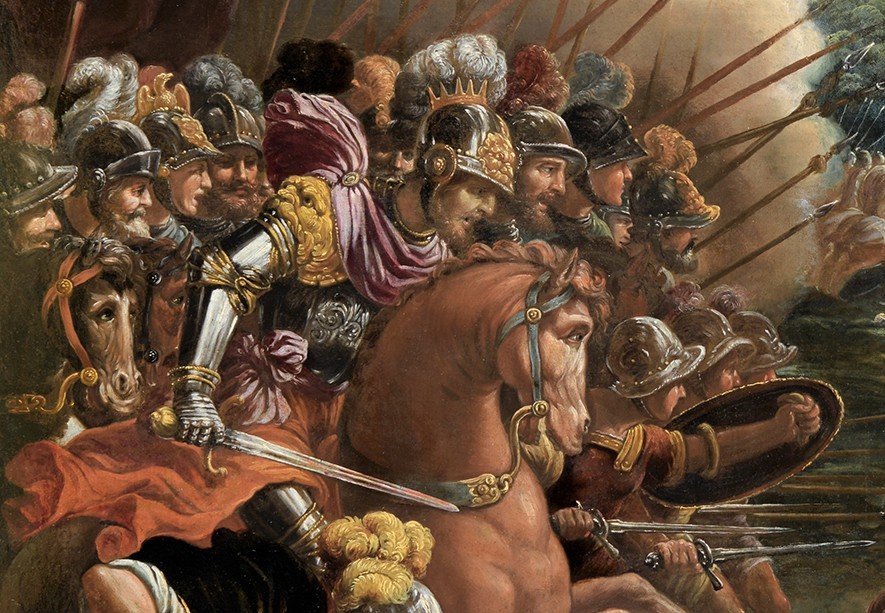
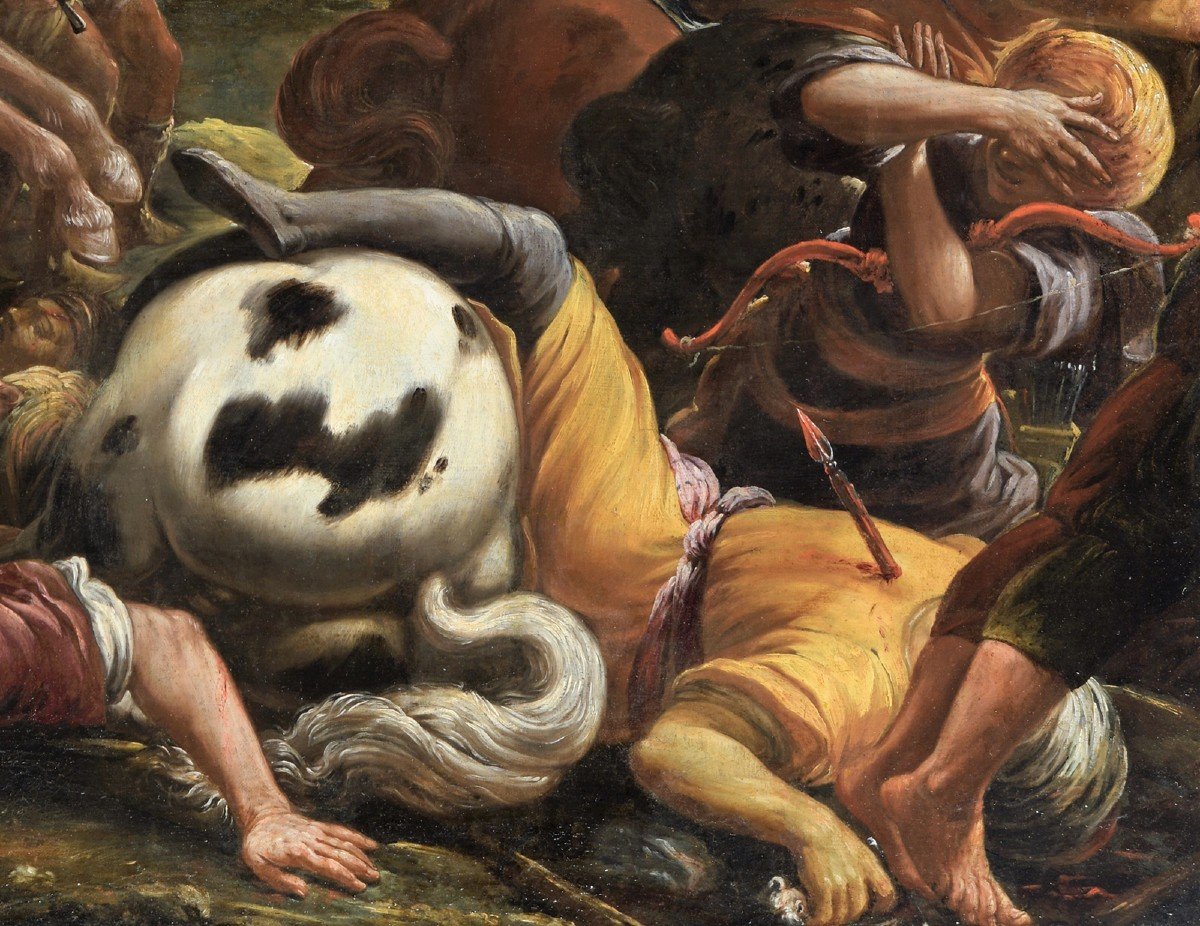
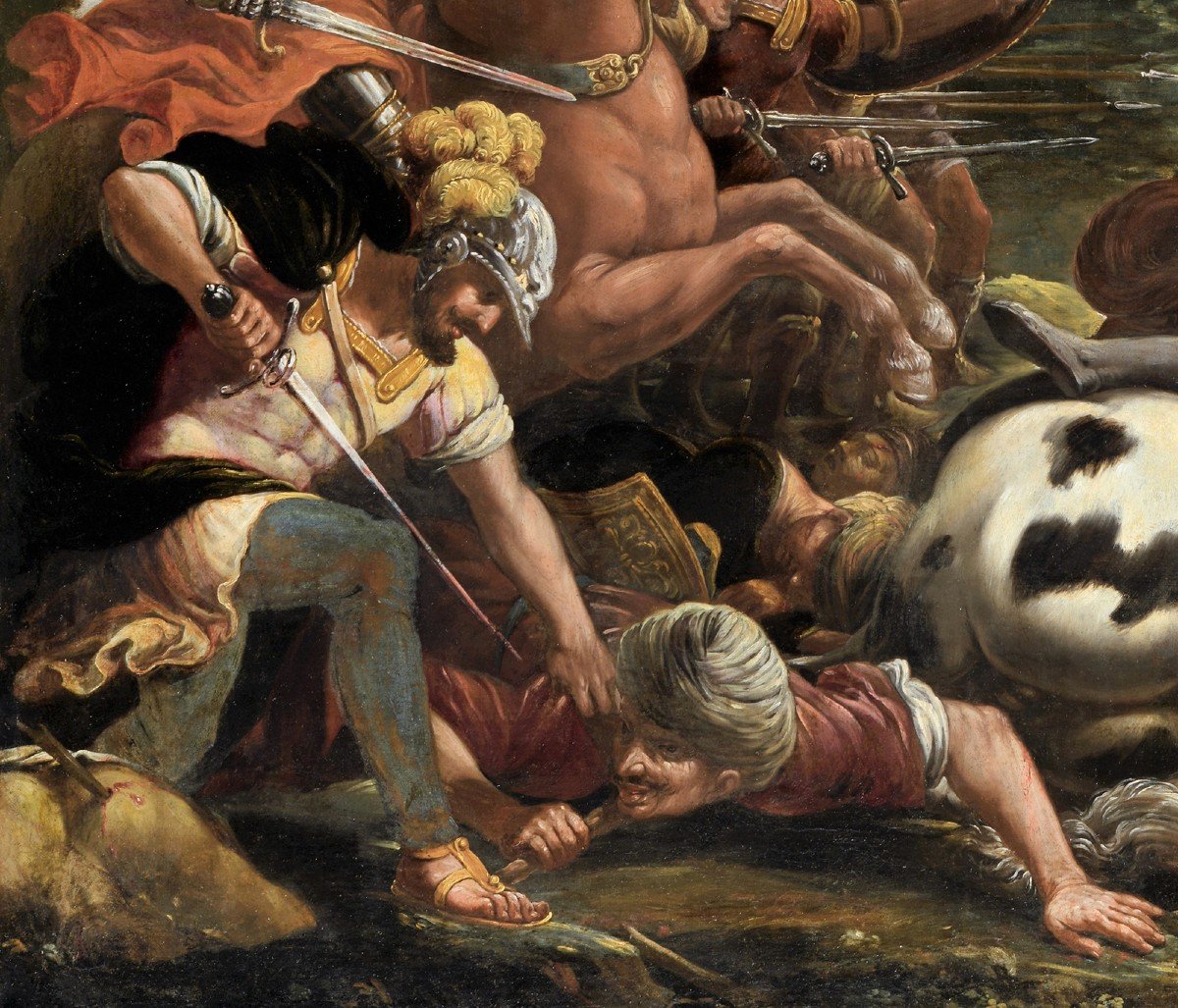









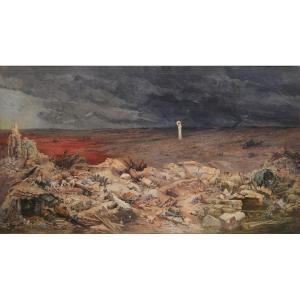
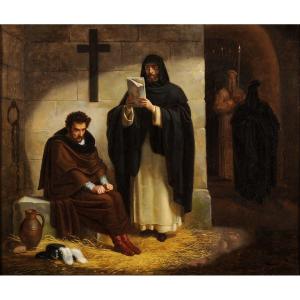
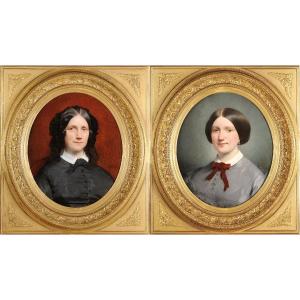


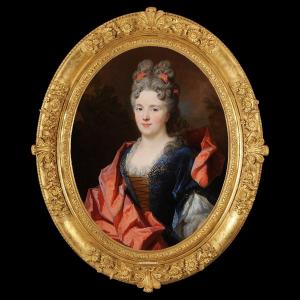


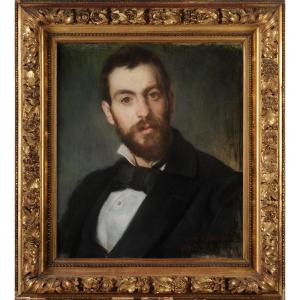
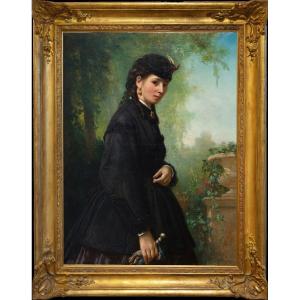


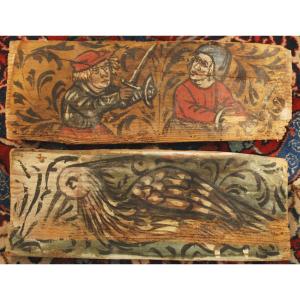
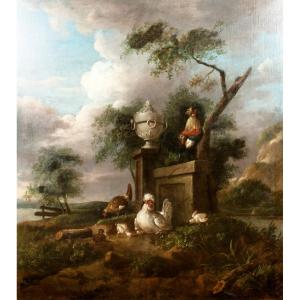






 Le Magazine
Le Magazine Rivista Artiquariato
Rivista Artiquariato TRÉSORS magazine
TRÉSORS magazine